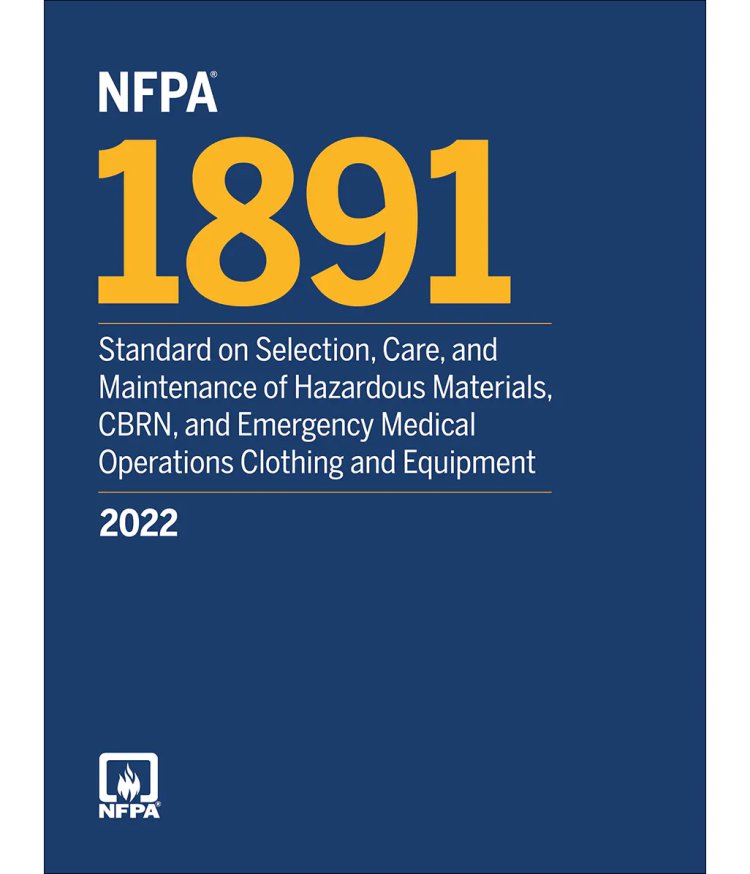"Understanding NFPA 1891: Protecting Rescuers with the Right Gear"
Complying with NFPA 1891 is essential for protecting both the safety of technical rescuers and the investment in high-performance gear. By following the standard’s guidance on selection, care, and maintenance, agencies can ensure their equipment performs reliably in life-critical situations. More importantly, it helps build a culture of safety, preparedness, and professionalism within every rescue team.
Share this Post to earn Money ( Upto ₹100 per 1000 Views )

The NFPA 1891 standard, developed by the National Fire Protection Association, sets critical guidelines for the selection, care, and maintenance of protective ensembles used in technical rescue incidents. These protective ensembles include garments, helmets, gloves, footwear, and other components designed to safeguard emergency personnel involved in high-risk rescue operations, such as confined space rescue, rope rescue, water rescue, and trench rescue. Complying with NFPA 1891 is not just a matter of regulation—it's essential for ensuring the safety, durability, and effectiveness of rescue gear used in challenging environments.

Understanding NFPA 1891
NFPA 1891 outlines the minimum requirements for organizations and individuals responsible for the care of technical rescue protective equipment. It focuses on three main areas:
-
Selection of appropriate gear based on mission-specific hazards.
-
Routine and advanced inspection to ensure the integrity of the equipment.
-
Proper cleaning, decontamination, repair, and storage to extend the lifespan and maintain the performance of the gear.
This standard applies to both career and volunteer rescue teams, fire departments, and any agency involved in technical rescue work.
1. Selection of Protective Gear
Choosing the right gear begins with a comprehensive risk assessment. NFPA 1891 encourages organizations to evaluate the specific hazards of each rescue scenario. For example, water rescue operations may require gear with enhanced thermal protection and water resistance, while rope rescue situations may prioritize abrasion resistance and flexibility.
When selecting equipment, consider factors such as:
-
Compatibility with other PPE
-
Environmental conditions (temperature, moisture, exposure to chemicals)
-
Comfort and mobility for the user
-
Manufacturer compliance with NFPA 1951 (standard on protective ensembles for technical rescue)
Documentation of the selection process and rationale is an important part of compliance, ensuring transparency and accountability in case of audits or incidents.
2. Care and Maintenance
Routine care is key to preserving the performance of technical rescue gear. NFPA 1891 requires that protective ensembles undergo regular inspections—both routine (by the user) and advanced (by trained personnel). These inspections should identify wear and tear, damage, or contamination that could compromise safety.
Important maintenance practices include:
-
Routine cleaning after each use using manufacturer-approved methods
-
Advanced cleaning or decontamination for exposure to hazardous substances
-
Repairs only by trained technicians or the manufacturer
-
Proper storage in a clean, dry, and temperature-controlled environment to prevent degradation
Keeping accurate records of inspections, cleanings, and repairs is also required under NFPA 1891, ensuring a full lifecycle history for each piece of gear.
3. Training and Policy Implementation
Compliance with NFPA 1891 also involves educating personnel. All users must be trained in how to inspect, clean, and store their equipment properly. Departments should establish written policies and procedures aligned with NFPA 1891 and ensure they are followed consistently.
Final Thoughts
Complying with NFPA 1891 is essential for protecting both the safety of technical rescuers and the investment in high-performance gear. By following the standard’s guidance on selection, care, and maintenance, agencies can ensure their equipment performs reliably in life-critical situations. More importantly, it helps build a culture of safety, preparedness, and professionalism within every rescue team.















